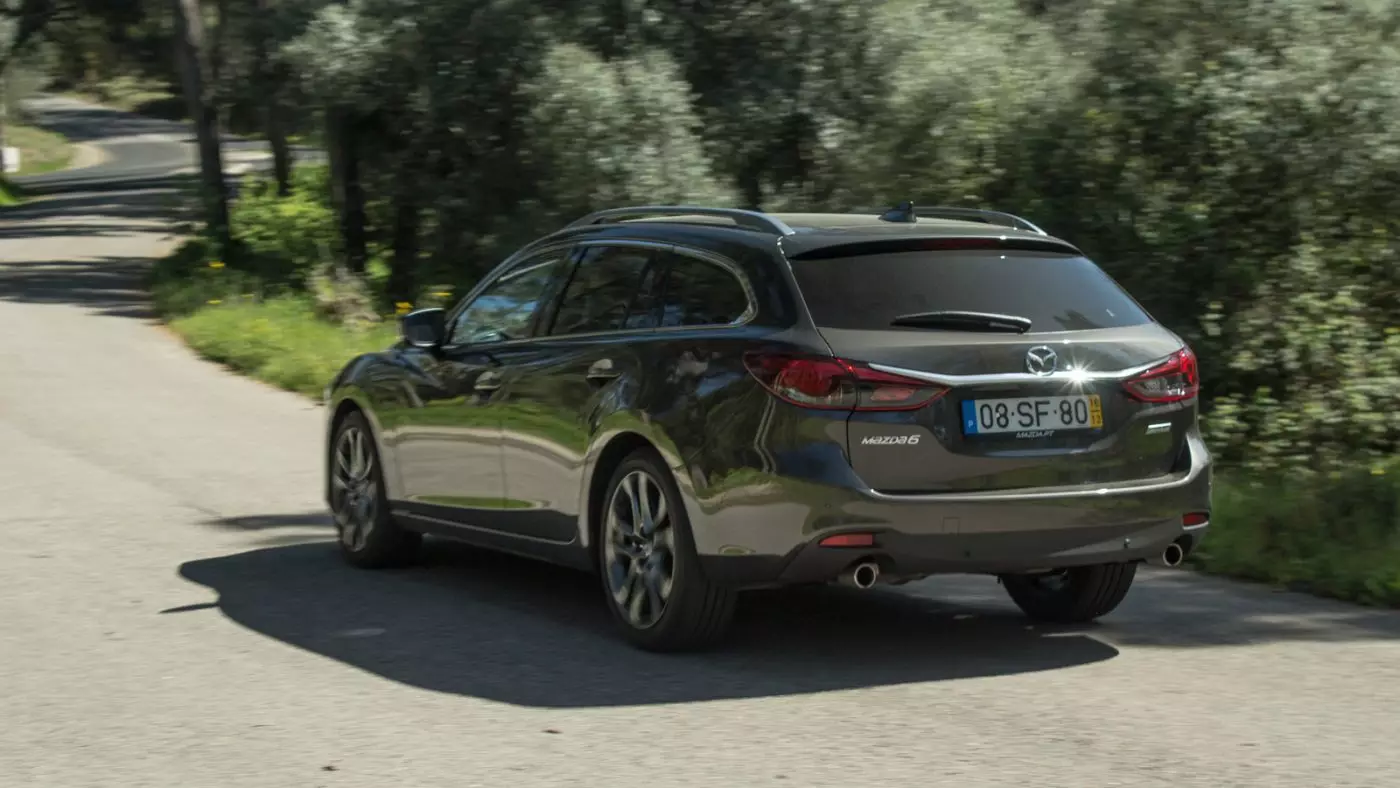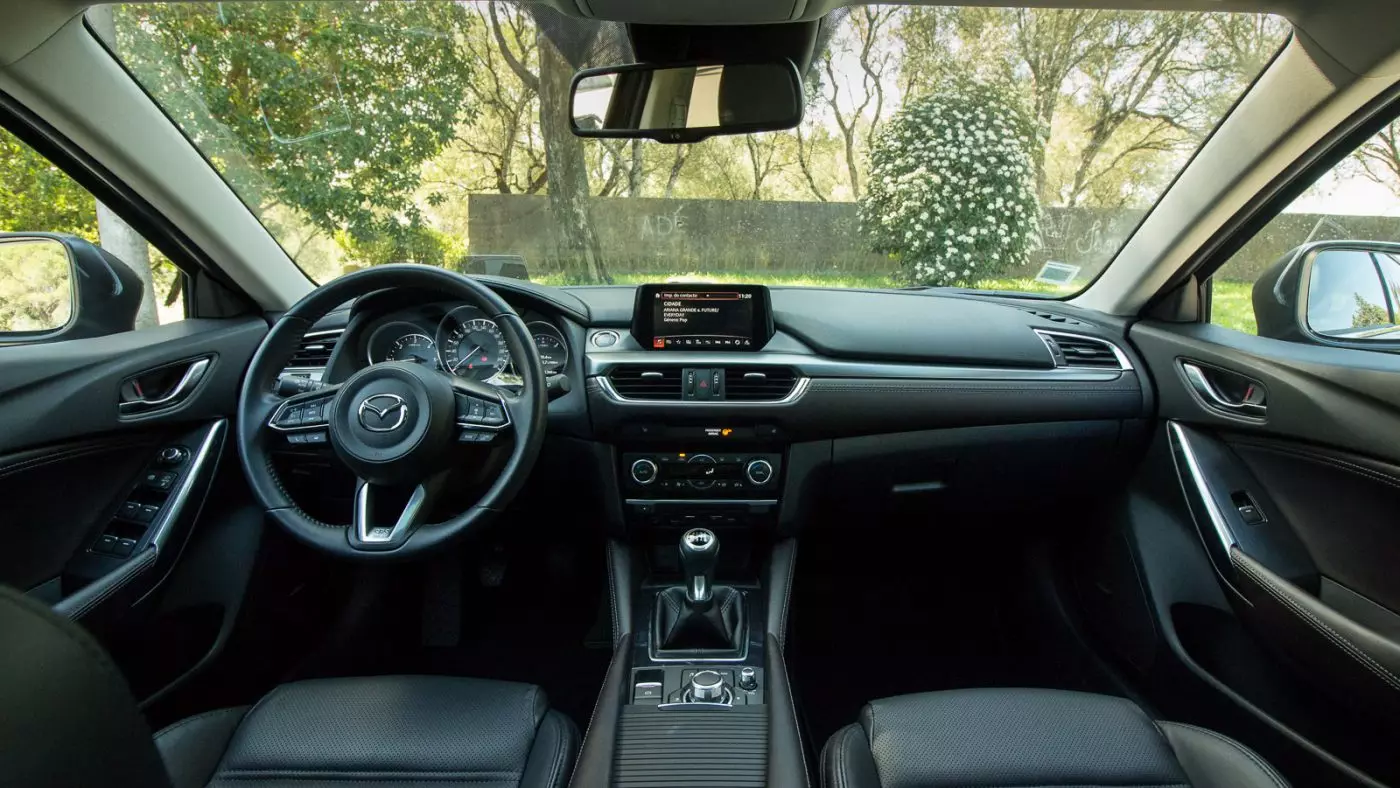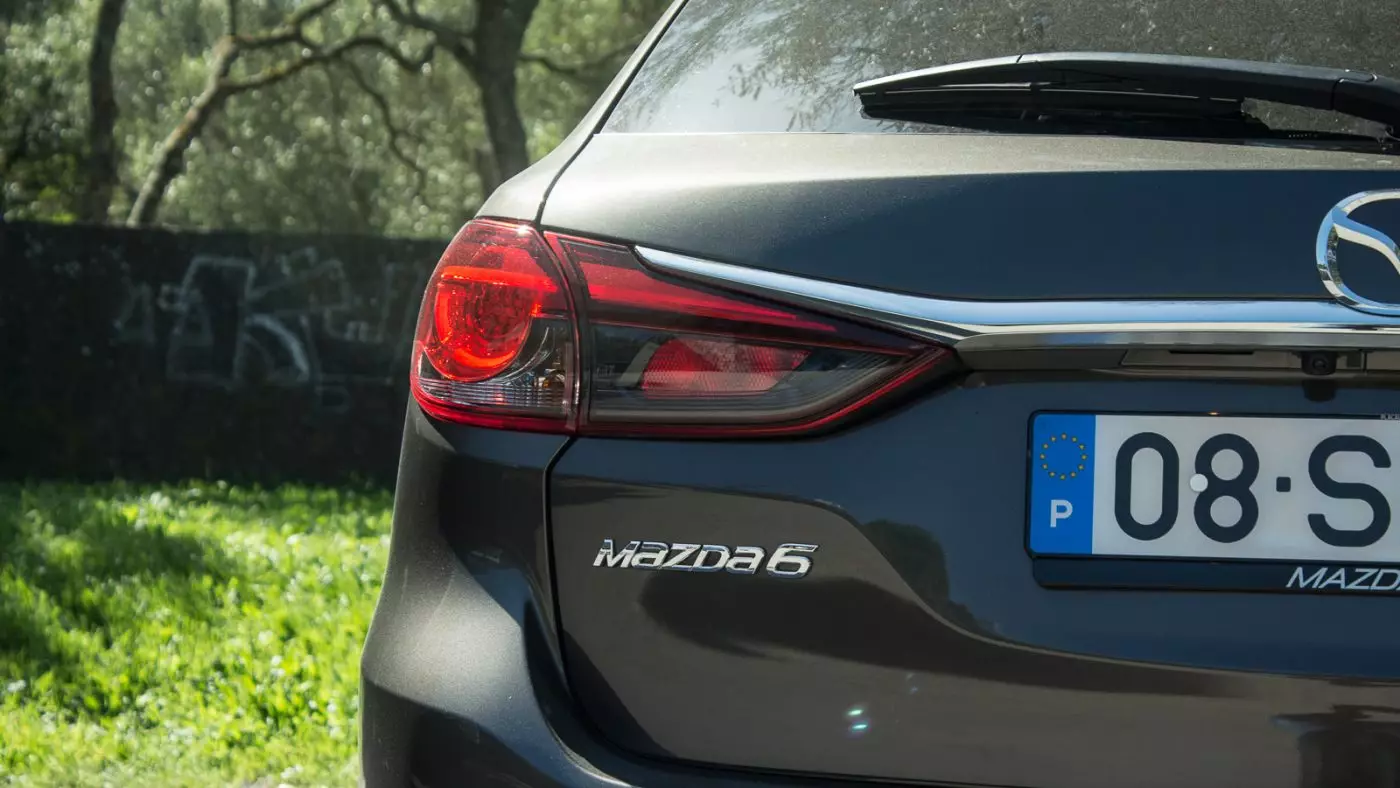It's a fact: 2016 was a year of growth for Mazda. For the fourth consecutive time, the Japanese brand once again registered a growth in sales in Europe. This evolution is justified, in large part, by the successful renovation of its main models in the last two years.
In addition to the new CX-5, Mazda3 and MX-5 RF, the bet for 2017 is also on the renovated Mazda6, in the van and saloon versions. More than just an aesthetic update, Mazda has recently enriched its top of the range with the G-Vectoring Control system, along with new additions to the SKYACTIV-D 2.2 diesel engines.
Slight improvements that all added up increase the qualities of this model very well born of the brand based in Hiroshima, Japan.

Mazda6 SW SKYACTIV-D 2.2 MT 175 hp
Same design, more technology
On the outside, Mazda followed the logic of “no change in a winning team”, and as such, Mazda6 remains true to the KODO language, showing no changes. It continues to be one of the most dynamic and appealing proposals in the segment, with distinctive details, such as the contours of the wheel arches, which start at the grille and only end at the front doors.
Inside, the Japanese model makes use of a new 4.6 inch touchscreen and a higher resolution head-up display. The new graphics and colors allow for greater readability under different light conditions, and it becomes especially useful to alert us when we travel above the allowed speed.

Mazda6 SW SKYACTIV-D 2.2 175 hp
Speaking of space, backseat passengers can't complain either. Legroom is not lacking. The 4.80 meters long of this van also guarantees 522 liters of luggage capacity.
Diesel engine more competent and… silent
It was in progress that we got to know the big news about the Mazda6, starting with the engine noise (or lack of it…). Mazda bet on the refinement of its diesel engines with three new systems: Natural Sound Smoother, Natural Sound Frequency Control and High-Precision DE Boost Control.
The first system uses a metal part (located inside the pistons) that cancels out the vibrations generated by the explosion moment of the air/diesel mixture, while the second adapts the engine timing to neutralize pressure waves and consequently reduce vibrations. This is how NSS works:
In practice, these two systems make the operation of the 2.2 liter engine significantly smoother and quieter, to which the good sound insulation of the cabin also contributes.
The third and final system, High-Precision DE Boost Control, is responsible for improving turbo pressure control and improving throttle response.
In terms of performance, the 175 hp SKYACTIV-D 2.2 engine leaves nothing to be desired, quite the contrary. In this version with a six-speed manual gearbox, the engine's response is linear and progressive, making it possible to print lively tempo in all speed ranges. On the other hand, the 420 Nm of torque means that we can face overtaking maneuvers without any fear.

Mazda6 SW SKYACTIV-D 2.2 175 hp
In terms of dynamics, the Mazda6 is in good shape. The new G-Vectoring Control dynamic assistance system that equips this model controls the engine, gearbox and chassis in an integrated way to improve both the speed of response of the set and stability. One more ingredient to reach Jinba Ittai, a concept that in good Portuguese means “horse and rider as a whole”. It's easy to see who's who in this transposition from the equestrian world to the world of automobiles.
At the end of the test, naturally, we did not reach the consumptions announced by the brand – the entry into force of the new consumption and emissions approval standards should reduce these discrepancies. Even so, the instrument panel showed a nice value: 6.4 liters/100km in mixed and carefree use.
